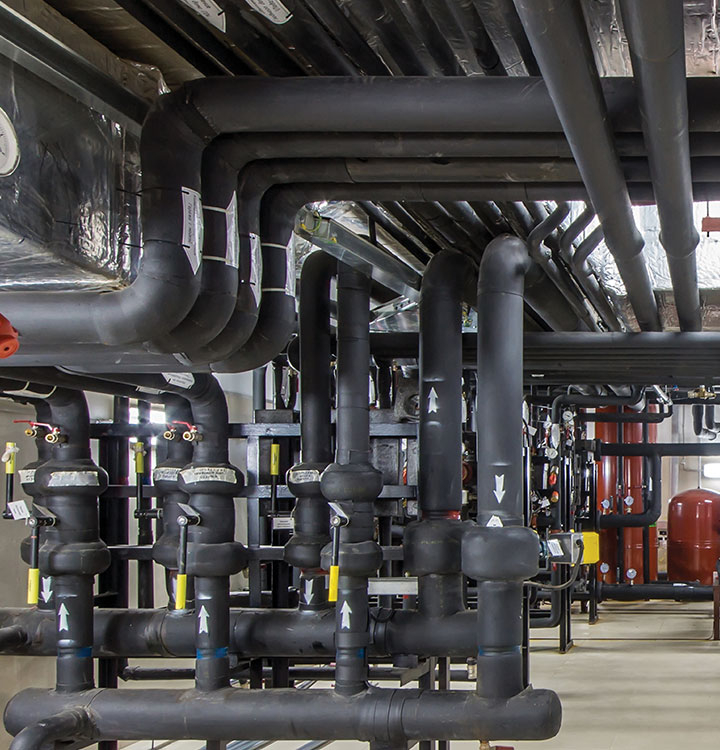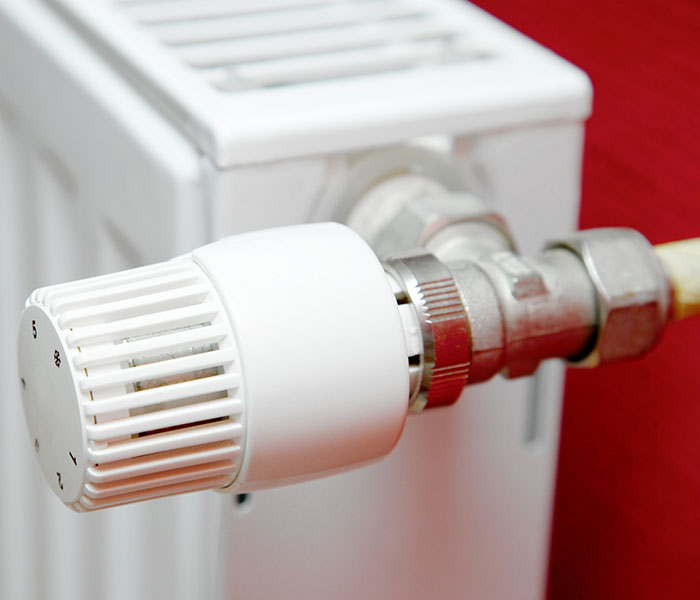Lifelong Energy Saving
Technical insulation made of flexible elastomeric foams (FEF) and polyethene foams (PEF) is among the few products which save more energy during their service life than they require for their manufacture.
As a result, they play an essential role in meeting the latest EU energy conservation targets.
Energy optimisation for building service pipework.
At a local, national and international level, Europe today stands poised to undertake the biggest “energy transition” in more than a century. With ambitious EU commitments to reduce greenhouse gas emissions by more than 40% by 2030 and achieve a 27% increase in energy saving over the same timeframe, insulation will play an increasingly important role and nowhere will the effects be more felt than in the construction industry.
Buildings currently consume around f40% of all the energy used within Europe. With space heating and cooling accounting for the majority of this the countries of the EU have tightened their demands on the primary energy requirements of buildings.

Increased levels of structural insulation ensure that buildings retain heat more reliably but there has also been a focus on improving the efficiency of heating, cooling and ventilation systems. Insulation materials made of flexible elastomeric foams (FEF) and polyethylene foams (PEF) offer a sustainable way to reduce the energy use of these systems.
Studies shows positive ecological balance.
Industrially manufactured products require raw materials and energy for their production, but technical insulation materials are a special case as they save energy throughout their service life. Studies carried out by member companies of CEFEP have demonstrated that FEF pipe insulation materials have a net positive effect.
Several CEFEP members carried out analyses of their products over their complete life cycle (Life Cycle Assessment) under EN 15804. The results show that FEF and PEF insulation materials not only save energy, but they also continue saving energy throughout the life of the mechanical system.
The energy efficiency of technical insulation materials.

These analyses are showing that the energy requirements for supplying an average residential building with hot water and heat can be reduced by up to 25% by installing an optimal thickness of pipe insulation.
Technical insulation materials made of flexible elastomeric and polyethylene foams are highly recommended due to their consistent long-term efficiency and short payback times. Thanks to their closed-cell structure in conjunction with their low thermal conductivity, synthetic insulation materials help to reduce energy consumption in buildings. In many cases, the insulation of pipes, fittings and pipe clamps pays off after just a few weeks.
Increasing demand in air-conditioning.
When it comes to insulating air-conditioning pipes, the temperature on the surface of the material must be above the dew point at all times to prevent the formation of condensation that could otherwise result in pipe corrosion.
Although this is the main reason to insulation these pipes, there are energy-saving benefits too and investing in technical insulation materials soon pays off. “Protection from energy loss and prevention of condensation go hand in hand. The global demand for air-conditioning technology continues to rise – forecasts even say that the demand could triple by 2030.
 EN
EN  IT
IT  FR
FR  DE
DE 
